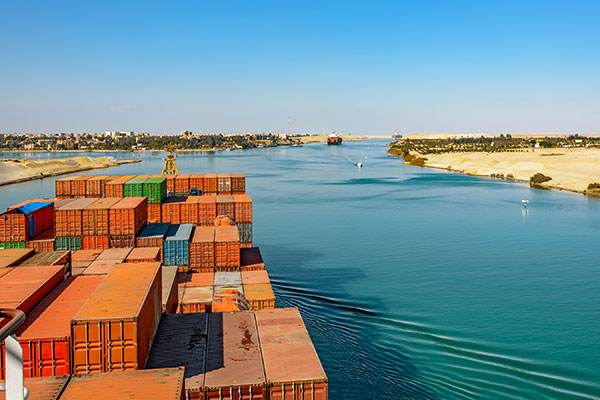The Suez Canal Authority is reporting its first major increase in ship traffic since the regional crisis began in late 2023, with October marking the highest monthly rate of returning vessels in nearly two years.
What’s Related
According to the authority, 229 ships transited the canal last month, part of a steady recovery between July and October that saw total tonnage rise 10% compared to the same period last year. While the number of ships improved by only 2%, the data shows that larger vessels are returning to the canal. In total, more than 4,400 ships made the transit over the four-month period.
The update came as Suez Canal Authority Chairman Admiral Ossama Rabiee met with representatives from 20 major shipping companies and agencies to discuss the latest developments in the Red Sea and Bab el-Mandeb region. The authority said it is hosting regular meetings to “consult on sailing plans and schedules for the coming period,” and is inviting shipping lines to conduct trial voyages through the canal.
Among the major carriers showing renewed interest is CMA CGM, which recently sent two of its 17,000-TEU vessels through the canal under European Union naval escort. The company said it plans to increase its voyages in the coming months, although its largest 23,000-TEU ships have yet to return. Other carriers, including Hapag-Lloyd, MSC Mediterranean Shipping Company, Evergreen, and COSCO, said they are closely monitoring conditions and expect more traffic to follow as regional stability improves.
Admiral Rabiee said the authority’s outreach is aimed at restoring confidence in the canal as a key global trade route after months of disruptions that forced many carriers to reroute around the Cape of Good Hope. The Suez Canal handles roughly 12% of global trade and remains one of Egypt’s most important sources of foreign currency.
However, industry officials noted that the high cost of marine insurance remains a major hurdle. Abdel Aziz Nabil, a representative of the Inchcape Shipping Agency, told the meeting that insurance costs for vessels transiting the Red Sea are still “a significant obstacle” and one of the main reasons many shipping lines have yet to resume normal operations.

